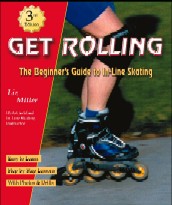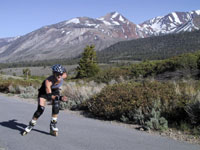It’s been awhile since I produced the third edition of Get Rolling, the Beginner’s Guide to Inline Skating, but I have checked the links below and they are still good guides for anybody who is interested in writing and publishing their own book.
I am not the best person to ask about finding a publisher because, except for one case, my publishers found me or I self-published. The one time I got a publisher to take over my book was when I approached a travel company with my first edition of Get Rolling, and they signed me up to put together a skate trails tour book and I inserted my how-to section into the front pages. Out of print now, my work has since been transformed to an online database of skate tours, www.CASkating.com.


 Fun as it is, skating contributes directly to improving the most sought-after exercise goals: improved aerobic fitness, strength, endurance and body fat reduction. Fast-paced skating has been proved to be just as aerobically beneficial as running; compared to cycling, an equal skating effort results in a better muscular workout for hips, thighs and shins. As long as you apply yourself to purposeful workouts with specific daily goals (as opposed to simply going through the motions), you are setting yourself up to enjoy the maximum possible benefits from fitness skating.
Fun as it is, skating contributes directly to improving the most sought-after exercise goals: improved aerobic fitness, strength, endurance and body fat reduction. Fast-paced skating has been proved to be just as aerobically beneficial as running; compared to cycling, an equal skating effort results in a better muscular workout for hips, thighs and shins. As long as you apply yourself to purposeful workouts with specific daily goals (as opposed to simply going through the motions), you are setting yourself up to enjoy the maximum possible benefits from fitness skating.